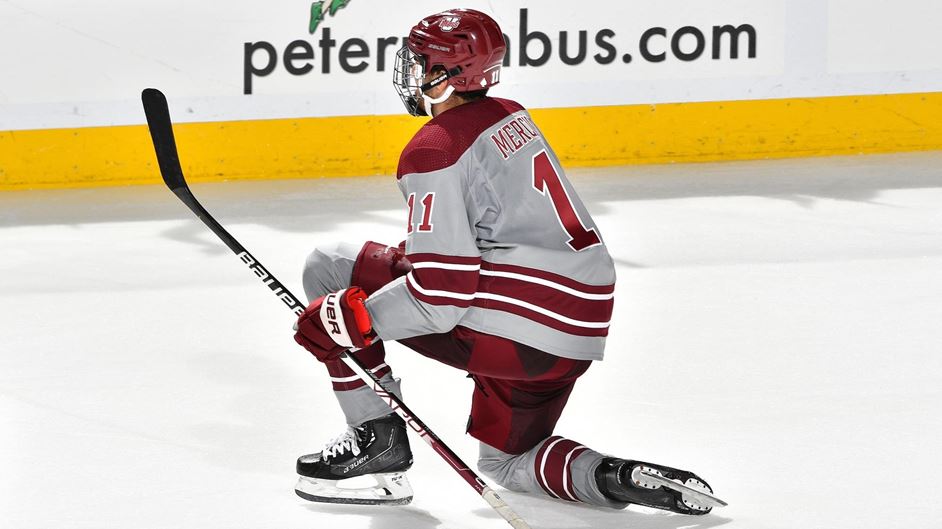
With about one-third of the regular season in the books, Hockey East teams have played seven overtime games.
Two of those contests — both of which occurred last weekend — remained tied after five minutes of 3-on-3 overtime, requiring a shootout (Massachusetts won at Boston University on Friday, while Vermont beat New Hampshire the following night).
The overtime format — which gives teams participating in overtime or a shootout two points in the standings for a win and one for a loss — had been in use by other conferences in recent seasons but was mandated by the NCAA for the first time at the start of the 2020-21 campaign. Games that end in regulation result in three points for the winner and zero for the losing squad.
According to the NCAA rulebook, if a game goes to a shootout, it is officially a tie in the in-conference and overall records. Also, team and coach records remain W-L-T.
There are mixed feelings about the format, and interviews this week with some of the league’s coaches revealed strong opinions on both sides of the issue.
Greg Carvel of UMass gives the format a big, and unambiguous, thumbs down.
“I don’t like (3-on-3 overtime) at all,” he said. “You come to college hockey to play four years, and I love the tie. There’s nothing wrong with a tie. You play hard for 60 minutes and then turn the game around. (I) hate it. I voted against it. (I) don’t like the shootout either.”
Vermont coach Todd Woodcroft said one thing he likes about 3-on-3 is how, from a coach’s standpoint, it combines preparation with on-the-fly decision making.
“It’s kind of like jazz music, and I know nothing about jazz music,” Woodcroft said immediately following the Catamounts’ shootout win at UNH on Saturday. I know that there’s improvisation — but there’s structure inside the improvisation. I’m not going to give away our secrets, but we have two or three things that we’re going to do inside our 3-on-3 that’s important.
“It’s also about feeling in the game who’s been good,” he continued. “We had two players on the ice late (vs. UNH) who were tired — we weren’t sure they would be able to go again, but they wanted it. So you listen to them.”
The new tie-breaking format mimics the one the NHL started using in 2005, when shootouts were introduced following a 4-on-4 overtime period. A decade later, the NHL changed overtime to 3-on-3.
UNH coach Mike Souza said he’s a big believer in college hockey being as closely aligned with the pro game as possible, as it will help those players with pro hockey in their future.
“Every one of our players, whether they can actually get there or not, aspires to play there or aspires to get as close to there as they can,” Souza said. “The more we can do to align ourselves with the National Hockey League, the better it is for college hockey in general. The 3-on-3 format (brings) us closer to the NHL.”
That feeling is not shared by Merrimack coach Scott Borek, who said 3-on-3 overtime and the shootout are more suited for the pro game, which plays a longer schedule and makes each result less consequential.
“It’s not something I enjoy or would have put in place,” Borek said. “It’s a pretty big difference when you play 82 games vs. 34, where every point is critical at the end of the year. I think we’re deciding our games in a way that was built for a bigger schedule.”


